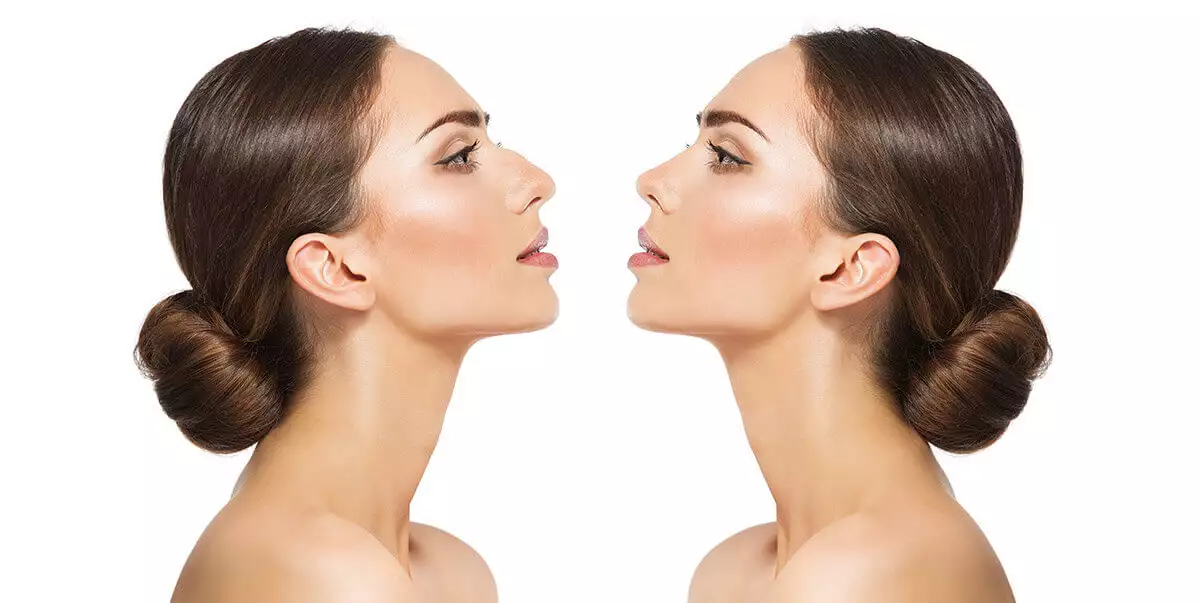
Rhinoplasty
What is Rhinoplasty?
Rhinoplasty, also known as Nose Aesthetics, is the surgical operation performed to change the shape of the nose. There are two main types of Rhinoplasty:
- Open Rhinoplasty:
Open Rhinoplasty aims to significantly reshape the nose. The Plastic Surgeon makes incisions along the nose to completely separate the skin from the bone and the cartilage, which allows the surgeon to see the underlying anatomy of the nose. - Closed Rhinoplasty:
Closed Rhinoplasty is similar to open Rhinoplasty, but the stitches are left hidden inside the nose instead.
Why is Rhinoplasty performed?
Rhinoplasty is performed to improve breathing function, to correct physical defects, or improve the aesthetic appearance of the nose. Rhinoplasty can greatly change the size and the appearance of the nose. Medical reasons to have a Rhinoplasty include:
- Deviated Septum
- Cleft Palate
- Cleft Lip
- Injury or trauma related structural abnormalities
- Nasal inflammation from chronic allergies
- Polyps or nasal masses
What are the conditions for Rhinoplasty?
Rhinoplasty is one of the most accessible Plastic surgeries; it simply has a single condition that needs to be fulfilled:
- The patient should be eligible to undergo general anesthesia.
What Are The Things To Be Considered Before Rhinoplasty?
Patients should:
- Be at the hospital a day before their surgery for the preoperative tests to be performed.
- Stop smoking and consuming alcohol at least 2 weeks before the surgery to alleviate the risk of a blood clot.
- Avoid medication containing aspirin or ibuprofen (Advil, Motrin IB, others) for two weeks before and after surgery. These medications may increase the risk of internal bleeding. Patients should confirm each medication and supplement they wish to take with their Patient Coordinator.
- Know that swelling and bruises can be excessive after Rhinoplasty, and that the nose can take a few weeks to heal.
How is the Rhinoplasty performed?
Rhinoplasty is flexible as it allows the bone, cartilage tissue, and the skin layer to be modified. A Plastic Surgeon will consider a patient's facial features, skin around the nose, and requests before making a recommendation.
First, patients are placed under anesthesia in order to ensure safety and comfort during the procedure. Plastic Surgeon begins by making incisions near the nose, incisions are hidden inside the nose if closed Rhinoplasty is performed or are made across the columella, the narrow strip of tissue that separates the nostrils, if open Rhinoplasty is performed. Through these incisions, the skin that covers the nasal bones and cartilages is gently raised, allowing access to the structure of the nose. The surgeon may then remove cartilage, use sutures to reshape cartilage, contour the bone, or place of cartilage grafts. If a functional rhinoplasty procedure is performed, airway obstructions or breathing issues are amended. Lastly, once the necessary corrections are made, sutures are placed to close the incisions and the nose is bandaged appropriately.
What are The Things To Be Considered After Rhinoplasty?
A splint may be placed inside the patient’s nose and bandages may be placed around the nose to support the new structure of the nose and assist with the recovery process. Swelling will subside within a few weeks, but the new nasal contour may take up to a year to fully refine.
The appearance of the nose will gradually change as the healing process continues. During the healing process, patients are advised to:
- Avoid strenuous activities and intense exercises such as aerobics and jogging
- Try to keep the operated area away from water
- Avoid facial expressions that put a strain on the nose, such as smiling or laughing.
- Brush their teeth gently to limit movement of the upper lip.
- Try to avoid contact with the nose, and be careful when putting on or taking off clothes.
What Are The Risks of Rhinoplasty?
Even though Rhinoplasty is a relatively safe surgery with a comfortable healing process, it still carries certain risks like any other major surgery, such as:
- Bleeding
- Infection
- Asymmetry
- An adverse reaction to the anesthesia
- Difficulty breathing through the nose
- Numbness in and around the nose
- Pain, discoloration or swelling that may persist
